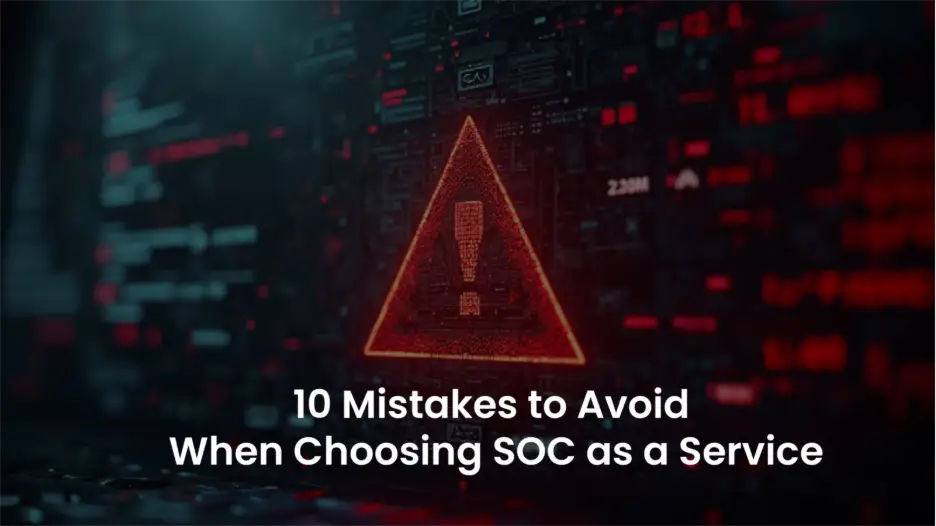Uncovering the Intricacies of Network Hacking: Learn How Cybercriminals Exploit Weaknesses for Personal Gain
Network hackers deploy their sophisticated technical skills to illegally access computer networks, driven by a variety of malicious intents. A significant number of these cybercriminals are primarily motivated by financial gain, seeking to steal sensitive data such as credit card information, personal identities, and confidential corporate records. Once obtained, this stolen data is often traded on underground online marketplaces, posing severe risks to both individuals and organizations. To devise effective cybersecurity measures that can preempt these threats, it is crucial to comprehend the underlying motivations for hacking. This understanding enables us to better safeguard critical data and valuable assets against potential breaches and illicit activities.
In addition to financial motives, certain hackers are driven by a desire for power and control, relishing the challenge of infiltrating secure systems and demonstrating their ability to navigate complex networks. Others may be inspired by ideological or political beliefs, targeting specific organizations or individuals to send a message or advocate for certain causes. The thrill of successfully bypassing intricate security protocols also serves as a compelling motivator for many hackers, highlighting the multifaceted nature of their intentions.
Understanding the various motivations behind hacking is essential for developing effective cybersecurity strategies. By tailoring defenses to meet the distinct motivations of cybercriminals, both organizations and individuals can significantly enhance their security measures, ultimately improving the protection of their digital environments against potential intrusions and breaches.
By gaining insight into the driving forces behind hacking behaviors, organizations can proactively identify emerging threats and implement robust cyber defense strategies. This proactive stance is crucial for minimizing risks and fortifying overall network security in an era marked by evolving cyber threats.
Key Insights into the Diverse Motivations of Cybercriminals
- The motivations of cybercriminals are varied, influenced by factors such as financial incentives, political objectives, and personal gratification, which drive them to exploit vulnerabilities within networks.
- Common tactics that cybercriminals utilize include phishing schemes, social engineering tactics, and taking advantage of software vulnerabilities to compromise systems.
- The evolution of cyber attack methodologies has transitioned from basic malware to more intricate breaches, with ransomware incidents and advanced persistent threats (APTs) becoming increasingly common.
- Consequences stemming from network hacking go beyond mere data theft, potentially resulting in substantial financial losses, damage to reputations, and legal ramifications for the affected entities.
- Implementing strong password protocols, performing regular software updates, and educating users on best cybersecurity practices are vital strategies for preventing and mitigating the impact of cyber attacks.
 Identifying and Mitigating Network Vulnerabilities: Understanding How Cybercriminals Exploit System Weaknesses
Identifying and Mitigating Network Vulnerabilities: Understanding How Cybercriminals Exploit System Weaknesses
In-Depth Analysis of Malware: A Continuous Threat to Network Security
One of the most prevalent methods used by cybercriminals is the deployment of malware, which includes various forms of malicious software such as viruses, worms, trojans, and ransomware. This harmful software is often propagated through phishing emails, compromised websites, or dubious attachments. Once malware successfully infiltrates a network, it can cause significant damage by stealing sensitive information, disrupting business operations, or even seizing complete control of computer systems. Raising awareness about these malware threats is crucial for establishing effective countermeasures that protect systems from potential dangers and ensure that essential information does not fall into the wrong hands.
Understanding Social Engineering: The Deceptive Tactics Used in Cybersecurity
Another prevalent tactic employed by cybercriminals is social engineering, which entails manipulating individuals into revealing sensitive information or taking actions that compromise network security. Techniques such as pretexting, baiting, and tailgating exploit human psychology to bypass technical defenses. This reality underscores the urgent necessity for organizations to educate their employees about these deceptive practices and foster a culture of vigilance in order to effectively combat such manipulations.
Leveraging Software Vulnerabilities and Conducting Brute Force Attacks
Network hackers frequently exploit software vulnerabilities to gain unauthorized access to computer systems. They specifically target outdated or unpatched software that harbors known security flaws, which can be exploited to install malware, pilfer sensitive information, or seize control of devices. Moreover, brute force attacks represent a common method among cybercriminals, where they systematically attempt numerous login and password combinations until they successfully identify the correct credentials, granting them entry to the targeted network. Understanding these tactics empowers organizations to enhance their defenses and proactively mitigate potential risks.
The Transformation of Cyber Attacks: From Basic Malware to Advanced Breaching Techniques
The landscape of cyber attacks has undergone a dramatic transformation, evolving from simple malware infections to complex network breaches capable of inflicting significant damage. In earlier times, hackers primarily relied on basic viruses and worms to disrupt networks, which were generally easier to detect and neutralize. However, these initial threats laid the foundation for the emergence of far more sophisticated cyber threats that pose substantial risks in today’s digital landscape.
As technology continues to advance, so too do the skills and techniques of cybercriminals, necessitating heightened vigilance from both individuals and organizations. Advanced persistent threats (APTs), characterized by their stealth and precision, have become increasingly common and can often evade detection for extended periods. Additionally, the troubling rise in ransomware attacks, which involve encrypting data and demanding payment for decryption, has emerged as a significant concern in recent years. It is imperative to remain alert and prepared in the ongoing battle against these continuously evolving threats.
Zero-day exploits, which target undiscovered vulnerabilities in software before patches or fixes are available, have gained prominence as cyber attacks become more sophisticated. These exploits can provide hackers with a significant edge, allowing them to exploit weaknesses before developers can respond. Furthermore, the increase in nation-state-sponsored attacks has further complicated the cybersecurity landscape, as governments deploy their resources to engage in global cyber espionage and sabotage efforts.
As the nature of cyber attacks continues to evolve, it is critical for both organizations and individuals to stay informed about emerging threats and adjust their security protocols accordingly. By fostering a proactive mindset, we can effectively safeguard our systems and data from potential risks, empowering ourselves in the face of ongoing cyber challenges.
 Understanding the Severe Consequences of Network Hacking: Protecting Your Valuable Data and Systems
Understanding the Severe Consequences of Network Hacking: Protecting Your Valuable Data and Systems
The consequences of network hacking can be devastating for both individuals and organizations. Once hackers gain unauthorized access to a computer system or network, they possess the capability to extract sensitive information, including banking credentials, proprietary secrets, intellectual property, and personal data. Such data breaches can lead to identity theft, financial fraud, and severe reputational damage for both businesses and individuals.
Moreover, network hacking can cause significant disruptions to business operations, resulting in extensive downtime that adversely affects productivity and revenue generation. In extreme instances, cyber attacks may culminate in the theft or destruction of vital data, leaving lasting repercussions for the victims. Once a system or network is compromised, there is a risk that hackers may install additional malicious software or backdoors, providing them with ongoing access to continue their illicit activities unnoticed.
The fallout from cyber attacks extends beyond immediate financial losses. These incidents can erode trust in digital systems and technology, fostering skepticism towards online services and engendering hesitance in adopting new digital innovations. The impact of network hacking is profound, with serious implications for individuals, businesses, and society as a whole.
 Comprehensive Strategies for Network Protection: Essential Measures to Prevent Cyber Attacks
Comprehensive Strategies for Network Protection: Essential Measures to Prevent Cyber Attacks
To effectively safeguard networks against cyber attacks, a multifaceted approach is paramount, combining technical safeguards with user education and awareness. Regularly updating software with the latest security patches is fundamental in preventing breaches, as it addresses known vulnerabilities and significantly decreases the likelihood of cybercriminals exploiting them.
Establishing stringent access controls and authentication methods is critical in preventing unauthorized access to networks and systems. This involves implementing complex passwords, enabling multi-factor authentication, and employing role-based access controls to limit permissions based on job responsibilities. Organizations should also invest in reliable security measures such as firewalls, antivirus software, and intrusion detection systems to deter unauthorized access attempts and enhance overall security posture.
Conducting regular security audits and penetration testing is essential for assessing the effectiveness of your cybersecurity framework. By identifying and addressing vulnerabilities within your network defenses before cybercriminals can exploit them, you can significantly reduce the risk of cyber attacks. Additionally, promoting user education and awareness is a vital component of this proactive strategy, fostering a culture of security consciousness within organizations.
Empowering Cybersecurity: Practical Strategies for Individuals and Organizations to Counter Network Hackers
Building a Robust Cybersecurity Framework
Establishing clear policies and procedures for managing access controls, safeguarding sensitive data, responding to incidents, and providing security awareness training can significantly enhance an organization's cybersecurity framework. This structured approach not only aids in formulating a comprehensive strategy for addressing potential threats but also ensures that all personnel are well-equipped to effectively manage vulnerabilities.
Proactively Safeguarding Sensitive Data
Implementing encryption technologies to shield sensitive information from unauthorized access during transmission or storage is critical. Organizations should also conduct routine risk assessments to identify security weaknesses and prioritize areas for improvement. This strategic focus enables businesses to allocate resources effectively and address the most pressing security gaps within their networks, thereby ensuring a robust defense against potential breaches.
Individual Contributions to Strengthening Cybersecurity
Individuals can play a crucial role in defending networks from hackers by adopting sound cybersecurity practices. This includes using strong, unique passwords, exercising caution when sharing personal information online, ensuring that software updates are performed regularly, and remaining vigilant against potential security threats. By proactively securing their devices and data, individuals contribute to cultivating a safer and more reliable internet environment for everyone.
Anticipating Future Trends in Network Hacking: New Threats and the Importance of Vigilance
As technology continues to evolve, so will the skills and techniques employed by network hackers. Emerging threats such as AI-driven attacks, cryptographic breaches linked to quantum computing, and vulnerabilities arising from the expanding landscape of Internet of Things (IoT) devices are expected to become increasingly prevalent. These new challenges will create significant hurdles for cybersecurity professionals, necessitating innovative solutions to effectively mitigate their impacts.
Furthermore, the growing connectivity of IoT devices expands the attack surface accessible to hackers, generating new opportunities for exploitation. This trend also amplifies the risk of cyber attacks on critical infrastructure—such as power grids, transportation systems, and healthcare facilities—as these systems become more integrated with digital technology. This reality underscores the vital importance of staying vigilant and continually adapting cybersecurity measures to effectively combat emerging threats.
Collaboration among government agencies, industry partners, and cybersecurity experts is essential for developing effective strategies to defend against future network hacking threats. By remaining informed about evolving cybersecurity trends and investing in proactive defense strategies, individuals and organizations can better prepare for the challenges posed by the continually shifting landscape of network hacking.
References:
WHY IS CYBERSECURITY IMPORTANT FOR BUSINESS? – A&B Business. https://www.abbusiness.com/2023/06/22/why-is-cybersecurity-important-for-business/
What Is A Zero-Day Exploit And Why Are They Dangerous? – Cyber Matters Reviews. https://cybermatters.review/hacking/what-is-a-zero-day-exploit-and-why-are-they-dangerous/
The post How Cybercriminals Exploit Vulnerabilities appeared first on Ezi Gold.
The Article: Cybercriminals Exploit Vulnerabilities: An In-Depth Analysis Was Found On https://ai.ezi.gold
The Article Vulnerabilities Exploited by Cybercriminals: A Deep Dive Was Found On https://limitsofstrategy.com
The Article Cybercriminals Exploiting Vulnerabilities: An In-Depth Analysis First Appeared ON
: https://ad4sc.com












Silas Dawit
This exploration into the motivations behind network hacking really resonates with the ongoing conversation about cybersecurity in our tech-driven world. It’s fascinating to consider how diverse the motivations for hacking can be—not just the financial gain but also the psychological sense of power and even the thrill of the challenge.